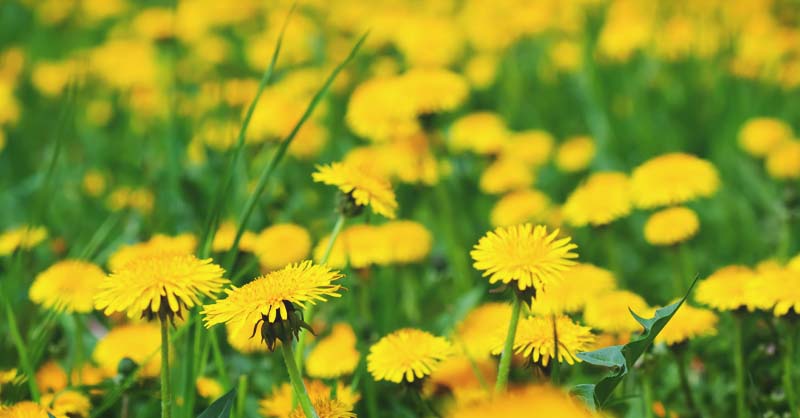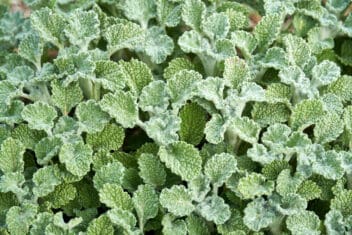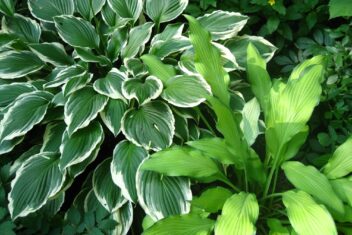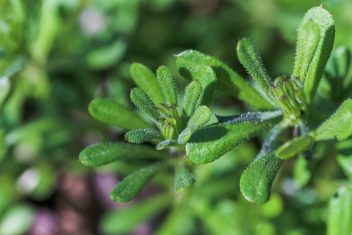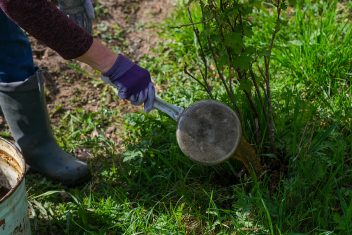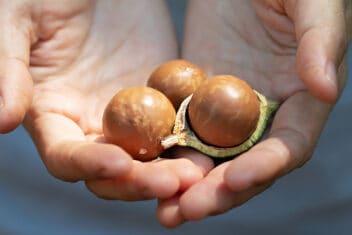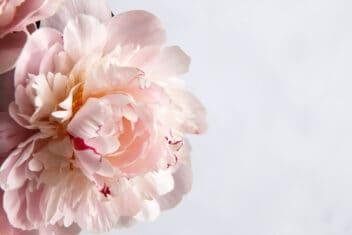My relationship with weeds has evolved over the years. When I started digging in the dirt, I had a black and white view of the plants in my garden. There were the good plants I intended to eat and the ones that got in the way. Those that cropped up unexpectedly were enemies to destroy. Over time, my view of those sneaky plants has shifted.
I’m no longer interested in declaring war on plants that pop up seemingly out of nowhere. I try not to call them weeds, either. My new appreciation for these other plants comes from a place that realizes that I am the one who has decided to take up residence in a space that isn’t mine.
I am building in Mother Nature’s sphere, and I now know that the best way to work within that space is to work with and not against the forces of nature.
Sure, it’s annoying when a pest decides to make its home in my garden patch. I don’t love it when ‘weeds’ grow between my stepping stones and make my once tidy path look unruly. But I’m done declaring war. Instead, I find new and inventive ways to make things work.

Still, if you are set on eliminating them, you’ll find plenty of solutions below for dealing with dandelions in your yard or garden. These yellow puffs grow nearly anywhere and spread rapidly, so prepare yourself for the work ahead.
In this guide, you’ll also discover the potential reasons to embrace dandelions. I implore readers to explore a more inclusive approach to unwanted garden plants. Don’t let something as delicate as a puff of seeds get you down!
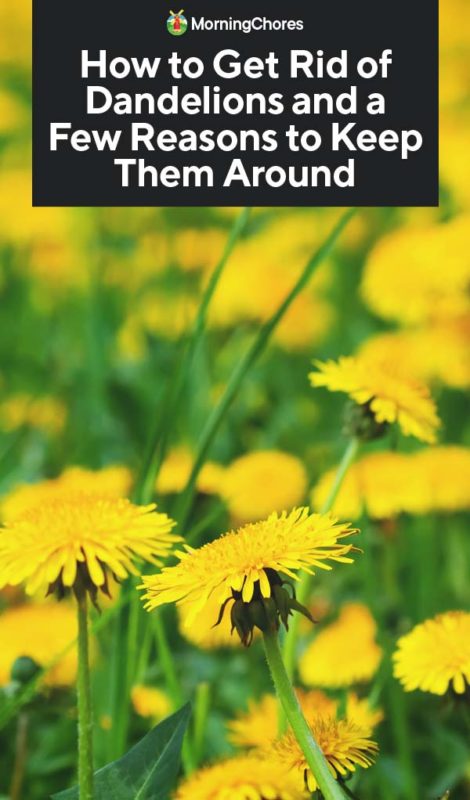
A Bit About Dandelions
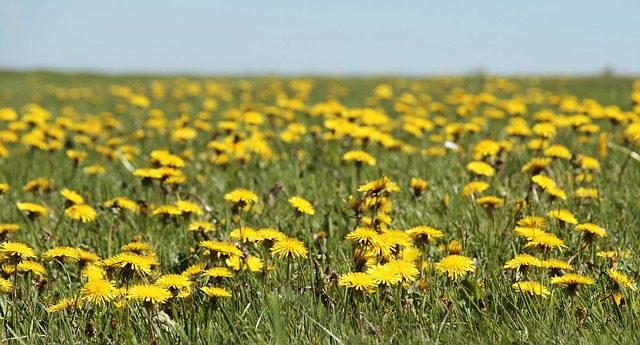
The dandelion is a perennial flower capable of thriving in poor soils. Dandelions are easy to spot thanks to their recognizable yellow flowers that bloom in the springtime. Mature dandelions transform into lightweight balls of seed fluff that hitchhike to neighboring green spaces thanks to gusts of wind. This seeding process means that dandelions are quick to spread and difficult to contain to one area.
Non-native to the Americas, the dandelion is considered an invasive species but is now so ubiquitous that it’s hard to imagine a field of grass without the distinct yellow blooms.
Reasons to Keep Them Around

Some gardeners don’t bother getting rid of these yellow pom-pom flowers. S
- They’re nutritious, and you can eat them – Dandelions contain compounds that have been shown to control blood sugar, lower cholesterol and blood pressure, and combat inflammation. You can also make tea and wine out of dandelions, and the greens are delicious in a salad.
- They’re fun for kids to play with – Dandelions show up pretty much everywhere. From vacant lots to sparse green areas surrounding concrete playgrounds. For kids, they’re the easiest flower to find and pick. Even as an adult, I’ve had fun sitting in a field of dandelions and watching the world go by. Even more amusing is when they turn into puffballs. Sending the seeds into the air is just like blowing bubbles.
- Bees and other beneficial insects love them – They’re an important source of pollen for many insects including bees. Without bees, most of your garden plants wouldn’t fare too well. The bright yellow flowers attract plenty of pollinators and beneficial insects that can lend you a helping hand with your garden endeavors.
- Birds enjoy dandelion seeds – Dandelions are also an important source of food for certain species of birds.
Reasons to Get Rid of Them
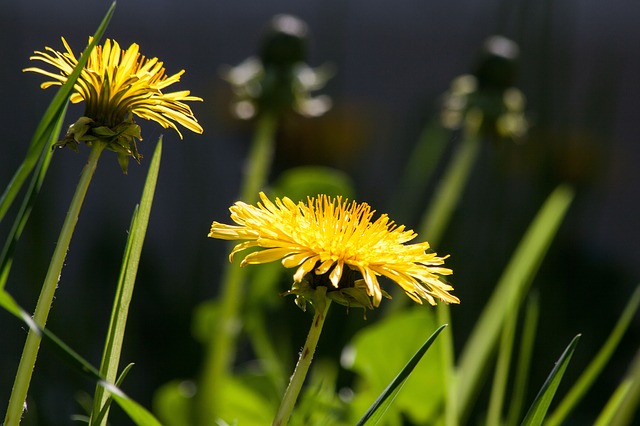
- They’re Ugly – For some folks, the impetus for wanting to get rid of dandelions has to do with aesthetics. I find them cute, but some consider them to be unsightly.
- They’re invasive – They spread and seed without trouble and compete with nearby plants for nutrients. They can also spread disease.
- They cause allergies – A case of the sniffles that doesn’t seem to go away may be the result of allergies. For some, the fluffy flying remnants of dandelion blooms may cause mild to severe seasonal allergies.
Ways to Get Rid of Dandelions
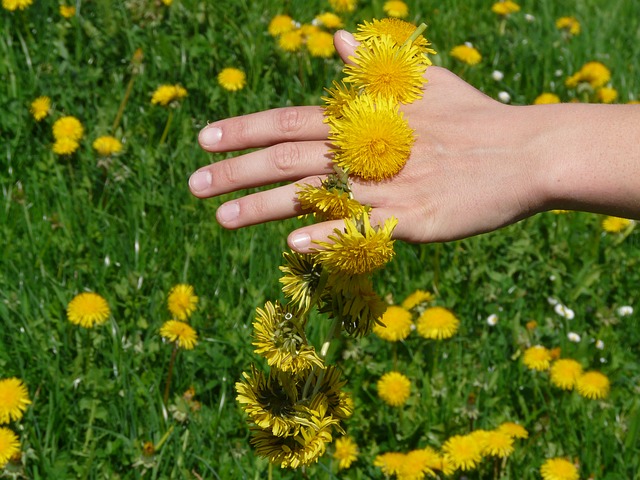
The key to ridding your lawn of dandelions is killing the taproot, which can grow up to three feet underground. Before you head out armed and ready to attempt a total eradication, though, you should be aware that getting rid of any invasive plant is not going to be a cakewalk. The deep root of dandelions makes them tough to get rid of, and even strong chemicals won’t kill them forever.
While some of the methods below are useful, I strongly suggest focusing on preventative options before resorting to weed killers and flame throwers.
Synthetic Options
Weed killers
I’ve been battling a terrible infestation of a vine in my garden for four years, and I still won’t consider weed killer, especially since my garden is where I
While dandelions may be an annoyance and ruin the pristine look of a gorgeous green lawn, they’re not the worst weed to go up against. I consider herbicide a complete last resort when all other methods have come up unsuccessful.
Weed killers can also kill grass surrounding dandelions, so you must be careful with your application if you choose to use them. Avoid spraying on a windy day, too.
Remember that even weed killers aren’t a miracle cure and often dandelions will pop back up the following season even after a lawn has been treated.
Natural Methods
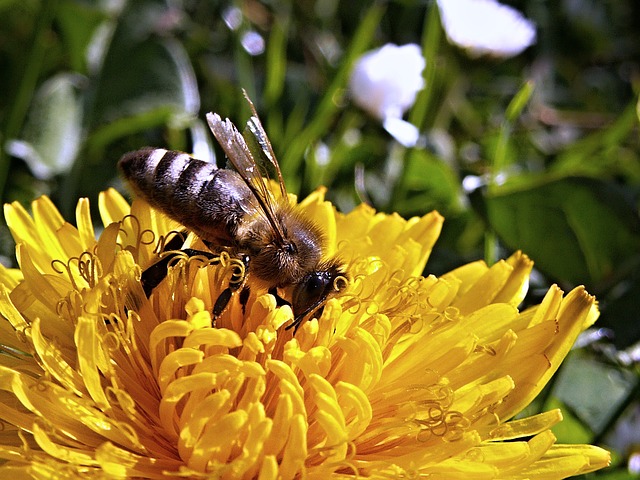
Prevention
Prevention methods won’t wholly eradicate your lawn of weeds, but can certainly help. Here are a few tips to help prevent dandelion and weed growth on your lawn:
- Leave grass clippings where they are – Don’t pick up them up after you mow your lawn. Clippings are an excellent mulch and suppress weed growth
- Take care of your lawn – Avoid mowing your grass too short. A thick lawn helps choke out undesirable weeds.
- Evaluate your lawn periodically – Keep an eye on patches in your lawn that may be the perfect spot for weeds. This includes thin spots, very sunny areas, and patches where grass may be dying. Re-sow grass seed in thinning patches, if needed.
- Avoid raking in the fall – Leaves act as mulch and suppress weed growth, but don’t let the leaves get too thick or it may smother your lawn.
Removal
When prevention isn’t working, and you’re still not interested in resorting to chemical warfare, consider the following natural methods for eradication:
- Natural Herbicide – Vinegar is an organic, natural herbicide thanks to its acidic properties. The stronger the vinegar, the more success you’ll have. Plain old vinegar that’s sitting in your cupboard isn’t particularly strong, but you can buy products with a higher concentration of acid or cook it down to increase its potency. Caution: vinegar is capable of killing surrounding grass, so be careful when applying it. Vinegar isn’t always successful in destroying the taproot, unfortunately. If vinegar isn’t enough, try one of our DIY weed killer recipes.
- Burning – Burning is a quick way to immediately kill dandelions that requires precision and caution. Burning gets rid of weeds quickly but doesn’t burn the taproot of dandelions, so they’ll eventually grow back.
- Manual Pulling – This is the most effective method so long as you get the taproot. Pulling the roots in addition to the above-ground plant may be difficult depending on the conditions. Wet soil is looser so you may have success attempting to pull dandelions after recent rainfall. You can also use a digging implement to get the whole root out.
Manual removal is a suitable option for lawns with a sprinkle of dandelions, but for severe infestations, consider other methods.
Problems You May Have With Dandelion Removal
Still not finding any success with dandelion removal? Here are some answers to common problems:
- They keep coming back –You haven’t gotten rid of the taproot, or you didn’t manage to get all the dandelions. Take a look at your neighbor’s lawn or grass nearby. D
andelion seed can travel! - My lawn is dying – Using herbicides and burn methods for killing dandelions may also harm your grass. Check labels and follow instructions for application very carefully.
Consider Getting Rid of Your Lawn
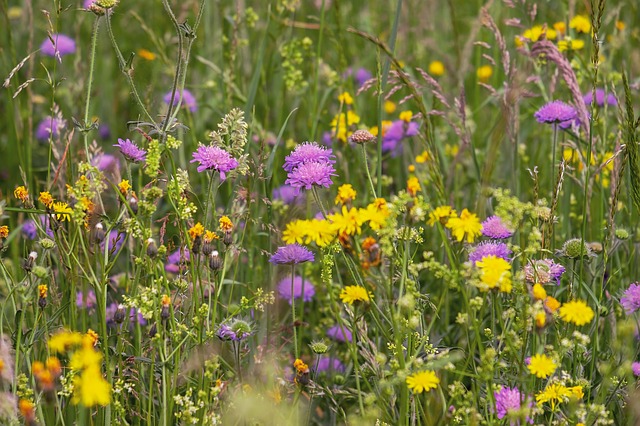
Tired of getting annoyed by the little yellow flowers that dot your pristine lawn each year? What’s a lawn good for anyway? It costs money to upkeep and water, and does nothing for the environment.
Consider transforming your green lawn into something more eco-friendly. Plant native grasses and wildflowers to help support local wildlife. Turn your green oasis into a lush, productive vegetable garden.
That’s what I’ve decided to do in my front yard. I was not interested in mowing and watering grass. I cringed every time my husband suggested putting the sprinkler out.
Instead, my front lawn houses raised garden beds where I grow a bounty of vegetables. It has been a slow process, but we’re slowly doing away with the grass. This year, we plan to start covering it all up with cardboard and mulch to create paths and completely remove the need for mowing.
A dense layer of mulch won’t just get rid of the grass, and you won’t have to contend with weeds, either. If a dirt path isn’t quite your style, consider covering the bare areas with bark chips or attractive stepping stones.
So what do you think? Ready to wage war on dandelions, or are you considering a truce? Let us know what you decide in the comments!

